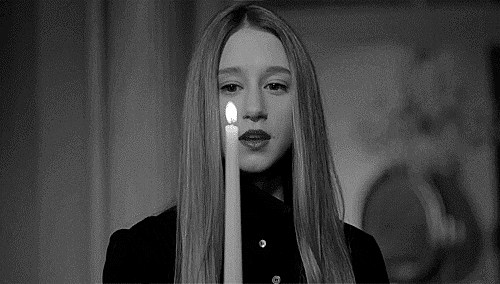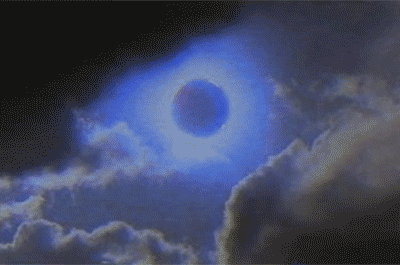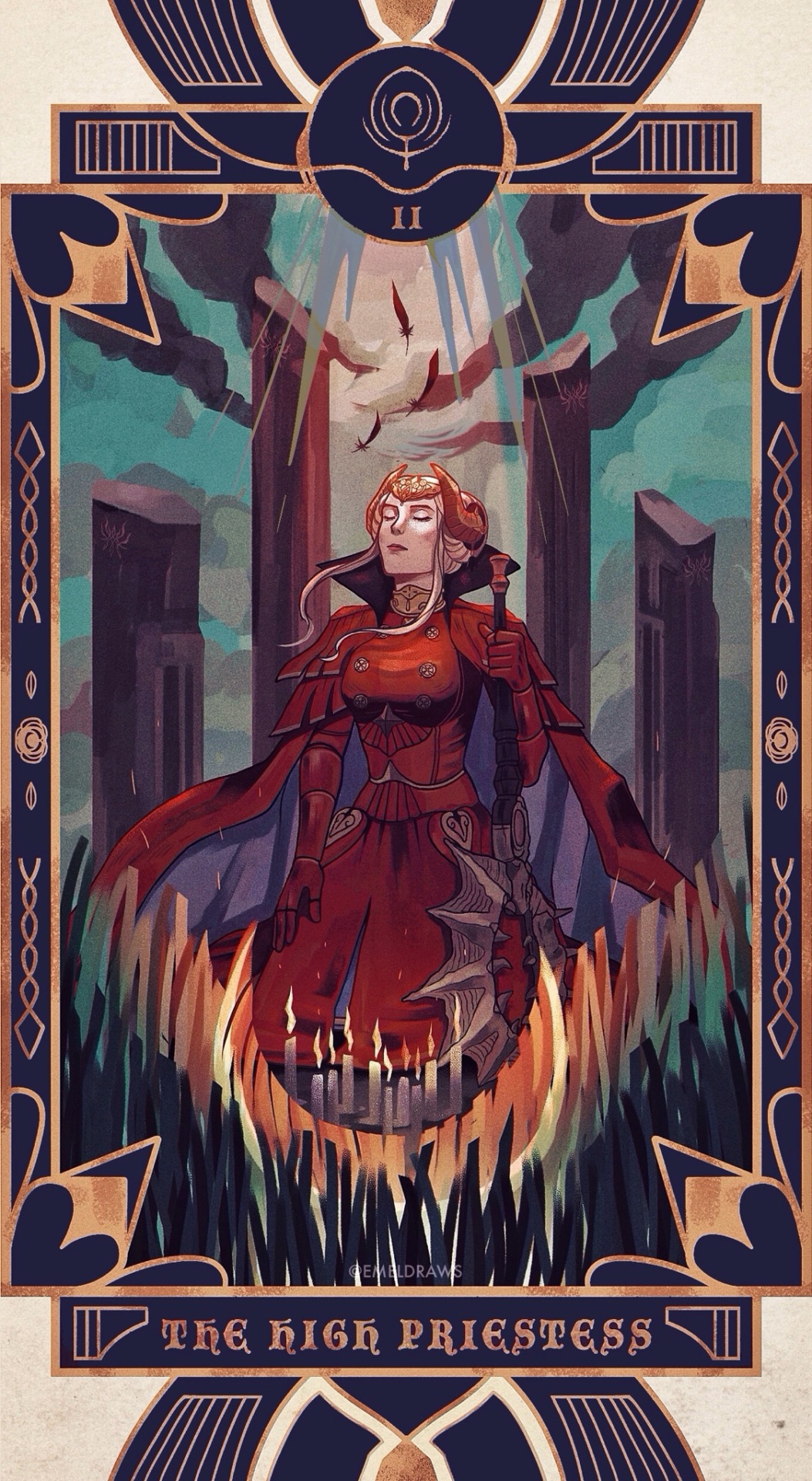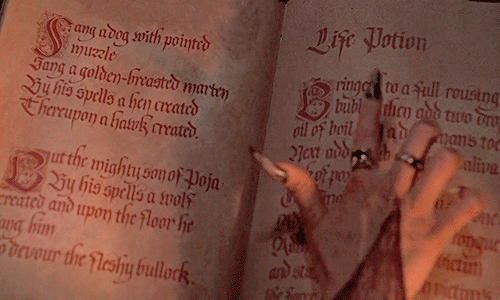#high priestess house
Explore tagged Tumblr posts
Text
𝕰𝖛𝖊𝖗𝖞𝖉𝖆𝖞 𝖂𝖎𝖙𝖈𝖍𝖈𝖗𝖆𝖋𝖙

ℌ𝔬𝔴 𝔱𝔬 𝔟𝔯𝔦𝔫𝔤 𝔪𝔞𝔤𝔦𝔠 𝔦𝔫𝔱𝔬 𝔱𝔥𝔢 𝔢𝔳𝔢𝔯𝔶𝔡𝔞𝔶 𝔪𝔲𝔫𝔡𝔞𝔫𝔢
Daily Affirmations: Start your day with positive affirmations or spells to set your intention.
Morning Ritual: Incorporate meditation or a grounding exercise into your morning routine.
Herbal Tea: Brew herbal teas with magical correspondences for specific needs (e.g., chamomile for calm).
Crystal Carry: Keep a small crystal in your pocket or bag for daily energy boosts.
Incense and Smudging: Light incense or smudge your space to cleanse and energize it.
Moon Water: Use moon water (water charged under the moon) for washing, drinking, or watering plants.
Sigils: Draw or carry sigils for protection, luck, or other intentions.
Altar Space: Create a small altar or sacred space in your home.
Candles: Light candles with intention, choosing colors that correspond to your needs.
Tarot or Oracle Cards: Pull a daily card for guidance.
Journaling: Keep a magical journal for spells, dreams, and reflections.
Nature Walks: Spend time in nature, collecting items like stones, leaves, or feathers for your practice.
Kitchen Witchery: Infuse your cooking with intention and use magical herbs and spices.
Charmed Jewelry: Wear jewelry that has been enchanted or charged with specific intentions.
Lunar Phases: Plan activities and spells according to the lunar phases.
Weather Magic: Use the energy of different weather conditions in your spells and rituals.
Mindful Cleaning: Clean your space with intention, using magical cleaning solutions.
Bath Rituals: Take ritual baths with herbs, salts, and oils for cleansing and manifestation.
Gratitude Practice: End your day with a gratitude practice or prayer.
Sacred Music: Listen to music that uplifts your spirit or has magical significance.
Writing Spells: Incorporate spellwork into your daily writing, such as emails or notes.
Daily Offerings: Make small offerings to your deities or spirit guides.
Visualization: Use visualization techniques throughout the day to manifest your desires.
Plant Magic: Care for plants and infuse them with your magical intentions.
Energy Shielding: Practice energy shielding techniques to protect your aura.
Creative Art: Use art and creativity as a form of magic and expression.
Spiritual Reading: Read books, articles, or blogs on witchcraft to expand your knowledge.
Community Connection: Connect with other witches online or in-person for support and inspiration.
Crafting: Make your own magical tools, such as wands, sachets, or charms.
Ritual Dress: Wear clothing or accessories that have been enchanted for specific purposes.
Daily Devotions: Spend time each day in devotion or meditation with your chosen deities.
Intentional Breathing: Use breathing exercises to center and ground yourself.
Astrology: Incorporate astrology into your daily planning and decision-making.
Digital Magic: Use apps or digital tools designed for witches to keep track of moon phases, spells, and more.
Rune Work: Draw a daily rune for guidance and reflection.
Harmonize with Elements: Incorporate the four elements (earth, air, fire, water) into your daily life.
Affirmative Speaking: Speak with intention and awareness, using positive and empowering language.
Gardening: Create a magical garden with plants that have specific correspondences.
Mindful Eating: Bless and infuse your food with positive energy before eating.
Dream Work: Keep a dream journal and work with your dreams for insight and guidance.
#high priestess house#highpriestesshouse#spirituality#divination#witchblr#tarot#witch#witchcraft#free tarot readings#witch community#astrology#manifestation#eclectic witch#cottage witch#baby witch#witchy vibes#witchcore#witchy#witches#witches of tumblr#beginner witch#folk witchcraft#green witch#kitchen witch#witch blog#witch stuff#witchcraft 101#witchywisdom#witchy things
758 notes
·
View notes
Text
I just made a post on this!
Magical correspondences are the result of centuries of observation, experimentation, and synthesis by various cultures and traditions. They were not decided by any single individual or group but evolved over time through the collective wisdom of countless practitioners. Today, they continue to be an essential part of many magical and spiritual practices, providing a framework for understanding and working with the interconnectedness of the natural and spiritual worlds.
Definitely do your own research, as it is such an in-depth topic, and there are various elements to understand!
You can write down as many correspondences as you want, memorize entire lists from someone else's blog or book or whatever, but none of it will matter if you do not understand those correspondences. It's so critically important to ask "Why?"
Why is spirit purple? Why is love red? Why is chamomile calm? Why is quartz "all purpose"? Why does cinnamon speed up a spell?
Why, why, why?
What do you actually believe? And why?
#high priestess house#eclectic witch#correspondences#witchblr#witch blog#spirituality#witch#witchcraft#witch community#alchemy
3K notes
·
View notes
Text

#retired head of state returns to her job as just high priestess#young pope meme#nelfs should actually wear hats and glasses more#also i thought seriously abt whether tyrande would smoke and decided no so it's incense lol#cos shes like.. at the temple#we can get only so lore inaccurate here in this house#tyrande
2K notes
·
View notes
Text
Astro Observations I
💜 Earth sun + water moon = masked vulnerability. I’m especially looking at you Capricorn sun and Scorpio moon.
💙 Virgo Venus aesthetic is either soft or the complete opposite.
💜Leo placements really don’t have to try for attention. Especially big 3. They really stick out!
💙Ya’ll think cancer mars have explosive anger, have you met Saturn ruled Mars? Capricorn and Aquarius Mars anger can be extremely explosive.
💜Quincunx aspects (inconjunctions) in astrology need to be talked about more.
💙Lilith in the 12th house in the ascendent sign will always unconsciously embody Lilith energy until they realise and learn to work with it.
💜Mars + Jupiter conjunction = sporty children. These people can also easily become argumentative.
💙Need tips on how to style your outfit? Bag a Taurus/Libra venus.
💜Neptunians are so ethereal like please. Especially when Neptunes makes aspect to the ascendent.
💙Water dominants 🤝 clinical daydreaming + zoning out mid sentence.
💜Having water and earth placements is very good if you want to get involved in the arts. Water provides the imagination and earth the drive to bring it into reality.
💙You can really spot a scorpio from a mile away. The aura and the eyes.
💜Moon in 5th house can indicate unplanned pregnancy so be careful.
💙Saturn in 2nd house. Money and self worth are such big lessons for you. How often do you feel like your possessions are either limited or being controlled?
💜Pluto in 10th house are always judged by society regardless of what they do, so they just stopped caring. They’re always caught up in some scandal.
💙Another note about Pluto in 10th, usually the way they blow up is through Plutonian things. Such as occult practitioners, even serial killers etc. These roles bring in the most recognition and attention for them.
© 2024 occultwaters. All rights reserved.
💙💜💙💜💙💜💙💜💙💜💙💜

#astro notes#astrology#astroblr#astro community#astro observations#astro chart#astro content#free astrology reading#occultwaters#the high priestess#astrology observations#astrology notes#water signs#earth signs#cancer#capricorn#virgo venus#taurus#libra venus#taurus venus#leo placements#aquarius mars#capricorn mars#cancer mars#lilith in the houses#Saturn in 2nd house#libra#scorpio placements#neptune#moon aspects
1K notes
·
View notes
Text


[FE3H Major Arcana series]
2 Edelgard, The High Priestess
3 Annette, The Empress
Physical copy of the full major arcana set is now available on my shop at artofemel.bigcartel.com! ✨
#artists on tumblr#digital art#fe3h#fan art#tarot#major arcana#fire emblem three houses#edelgard von hresvelg#annette dominic#the high priestess#the empress
93 notes
·
View notes
Text


She was a high priestess of House Vandree. Beautiful, elegant, ruthless.
I adored her, and had been sharing her bed for some time when the order came that she must die.
I stayed with her while the poison did its work, and whispered words of comfort as she slipped away.
-Minthara Baenre, Baldurs Gate 3
She brought food and wine to her priestess. Leaving armor and weapons at home. Her love knew the wine was poisoned. Still she drank the whole glass, sadness and defeat in her eyes. She caught her before she hit the ground.
„I am so sorry.“, she whispered against her cheek, smeared with blood. Both of them shed a tear, glistening in the hundred candles that lit the temple.
Edit: I am now writing their story down. Its ‚Her Priestess‘ on ao3
#bg3 minthara#minthara#baldurs gate 3#bg3#bg3 fanart#minthara baenre#fanart#the high priestess of house vandree#I beg you to click on it for details#Illiamer Vandree
414 notes
·
View notes
Text
ʜᴏᴛᴅ ᴀꜱ ᴛᴀʀᴏᴛ ᴄᴀʀᴅꜱ

ʙʟᴀᴄᴋꜱ
ʀʜᴀᴇɴʏʀᴀ ᴛᴀʀɢᴀʀʏᴇɴ- ᴛʜᴇ ʜɪɢʜ ᴘʀɪᴇꜱᴛᴇꜱꜱ
ᴅᴇᴀᴍᴏɴ ᴛᴀʀɢᴀʀʏᴇɴ- ᴛʜᴇ ᴅᴇᴠɪʟ
ᴊᴀᴄᴀᴇʀʏꜱ ᴠᴇʟᴀʀʏᴏɴ- ꜱᴛʀᴇɴɢᴛʜ
ʟ��ᴄᴇʀʏꜱ ᴠᴇʟᴀʀʏᴏɴ- ᴄʜᴀʀɪᴏᴛ
ᴊᴏꜰꜰʀᴇʏ ᴠᴇʟᴀʀʏᴏɴ- ꜱᴛᴀʀ

ɢʀᴇᴇɴꜱ
ᴀʟɪᴄᴇɴᴛ ᴀɴᴅ ᴏᴛᴛᴏ ʜɪɢʜᴛᴏᴡᴇʀ- ᴛʜᴇ ᴛᴏᴡᴇʀ
ᴀᴇɢᴏɴ ᴛᴀʀɢᴀʀʏᴇɴ- ᴛʜᴇ ʜᴀɴɢᴇᴅ ᴍᴀɴ
ʜᴇʟᴀᴇɴᴀ ᴛᴀʀɢᴀʀʏᴇɴ- ᴛʜᴇ ᴍᴏᴏɴ
ᴀᴇᴍᴏɴᴅ ᴛᴀʀɢᴀʀʏᴇɴ- ʜᴇʀᴍɪᴛ
ᴅᴀᴇʀᴏɴ ᴛᴀʀɢᴀʀʏᴇɴ- ᴛʜᴇ ᴍᴀɢɪᴄɪᴀɴ

#house of the dragon#hotd#blacks#greens#blacks vs greens#targaryens#hightowers#rhaenyra targaryen#deamon targaryen#jacaerys velaryon#lucerys velaryon#joffrey velaryon#alicent hightower#otto hightower#aegon ii targaryen#helaena targaryen#aemond targaryen#daeron targaryen#tarot cards#the high priestess#the devil#strength#chariot#star#the tower#the hanged man#the moon#hermit#the magician
28 notes
·
View notes
Text


Something a Red priestess of the Lord of Light would wear
Michael Costello, MT Costello line fall 2014
masterlist
#asoiaf#a song of ice and fire#house of the dragon#game of thrones#red priestess#lord of light#asoiaf aesthetic#essos#volantis#haute couture#michael costello#high fashion#melisandre#got aesthetic
40 notes
·
View notes
Text
feeling slightly vindicated watching an RAS interview bc keep getting this feeling from the drizzt books that theyre very italian-american (as in, i see a lot of things i recognize from italian culture in it, but influenced and changed by american culture) and he said that he based off the culture of menzo partly on his hometown and then the sopranos/godfather which confirmed it to me
also he pronounces menzoberranzan the way i used to before someone else corrected me JKNDSKJFKDS
#i used to pronounce it MEN-zoh-buh-ran-ZAN#but then i got told its MEN-zoh-buh-RAN-zan#for those wondering what i recognize abt italian culture (so far)#a BIG emphasis on family and religion#the pressure to create big families with lots of connections to other family units#emphasis on showing yourself as not only being religious but actively involve yourself in religious affair#and chasing approval of god (lolth)/ saints (the yochlol) /higher religious figures (high priestesses and the baenres)#people will react with high disapproval and often shunning or rage at someone rejecting the religious order or even just the suspicion of i#and of course the enforcement of gender binaries with set roles between women and men#pretty interesting too that in nearly all families i know including my own the wife/mother is always the most religious figure in the house#with many being actively involved in the parish (my mom's a cathechist lol)#while often the men range from neutral to disinterested to outright agnostic (rarely atheist tho)#which is very similar to how in menzo the women are the ones in religious power#the american part is the heavy emphasis on showy fights and large scale battles#a focus on individualism over the collective#and the big family part often coming more as a “couple and possibly lovers having lots of children”#rather than also the extended family of grandparents uncles aunts and cousins often living nearby#or straight up together and sharing family activities#legend of drizzt#bani.txt
16 notes
·
View notes
Text

Patricia Crowther - Witch Blood! - House of Collectibles - 1974
#witches#blooders#occult#vintage#witch blood#house of collectibles#patricia crowther#leo l. martello#high priestess#1974
39 notes
·
View notes
Text
𝖀𝖓𝖉𝖊𝖗𝖘𝖙𝖆𝖓𝖉𝖎𝖓𝖌 & 𝖀𝖘𝖎𝖓𝖌 𝕸𝖆𝖌𝖎𝖈𝖆𝖑 𝕮𝖔𝖗𝖗𝖊𝖘𝖕𝖔𝖓𝖉𝖊𝖓𝖈𝖊𝖘

Witchcraft magical correspondences refer to the associations made between various objects, substances, times, and events with specific magical effects or purposes. These correspondences have deep historical roots and derive from a blend of multiple sources, including ancient alchemy, early science, cultural symbolism, religious beliefs, and intentionality.
Ancient Alchemy
Alchemy, the precursor to modern chemistry, played a significant role in shaping magical correspondences. Alchemists sought to understand the mysteries of matter and the transformation of substances, often imbuing their experiments with spiritual and mystical significance. For example, the seven classical planets (Sun, Moon, Mercury, Venus, Mars, Jupiter, and Saturn) were associated with specific metals (gold, silver, mercury, copper, iron, tin, and lead, respectively). These associations were believed to reflect the planets’ influences on earthly matters and human affairs. Alchemical texts also explored the relationships between colors, elements, and spiritual principles, influencing the development of magical correspondences in witchcraft.
Ancient alchemy holds a significant place in the history of science, philosophy, and mystical traditions, influencing various fields and practices, including witchcraft. The importance of ancient alchemy can be understood through its contributions to the development of modern science, its philosophical and spiritual dimensions, and its enduring influence on magical and esoteric traditions.
The Great Work (Magnum Opus): Central to alchemy is the concept of the Great Work, which symbolizes the alchemist’s quest for spiritual and material transformation. This process involves the purification and perfection of substances, often mirroring the alchemist’s inner spiritual journey toward enlightenment and self-realization.
Symbolism and Allegory: Alchemical texts are rich in symbolism and allegory, using metaphors to convey complex philosophical and spiritual concepts. Symbols such as the philosopher’s stone, the ouroboros (a serpent eating its own tail), and the four elements (earth, air, fire, water) encapsulate profound ideas about the nature of reality, transformation, and the interconnectedness of all things.
Hermetic Tradition: Alchemy is closely associated with Hermeticism, a philosophical and spiritual tradition based on the writings attributed to Hermes Trismegistus. Hermetic principles, such as “As above, so below” and the unity of opposites, permeate alchemical thought and emphasize the correspondence between the macrocosm (the universe) and the microcosm (the individual).
Magical Correspondences: Alchemical principles and symbols have been integrated into various magical and esoteric traditions. The associations between planets, metals, and elements in alchemy have become foundational correspondences in many forms of magic and witchcraft.
Transmutation and Transformation: The alchemical goal of transmutation, particularly the transformation of base metals into gold, has a symbolic counterpart in magical practices. This idea of transformation is applied to personal growth, healing, and the manifestation of desires through magical means.
Ritual and Practice: Alchemical rituals, with their focus on purification, transformation, and the attainment of higher states of being, have influenced the structure and content of magical rituals. The use of specific substances, tools, and processes in alchemy has parallels in magical workings, emphasizing the transformation of both the practitioner and the environment.
Alchemy in the Renaissance: During the Renaissance, alchemy experienced a revival as scholars and practitioners sought to integrate ancient wisdom with emerging scientific knowledge. Figures like Paracelsus and John Dee contributed to the development of alchemical thought, blending it with medicine, astrology, and early chemistry.
Psychological Alchemy: In the 20th century, Carl Jung, a prominent psychologist, explored alchemy as a metaphor for psychological processes. Jung’s interpretation of alchemical symbolism as representing the individuation process—the integration of the conscious and unconscious mind—brought new insights into the relevance of alchemy for personal development and psychotherapy.
Contemporary Practice: Today, alchemy continues to inspire both scientific inquiry and spiritual exploration. Modern alchemists, both literal and symbolic, seek to uncover the hidden principles of transformation in nature and the self. The enduring appeal of alchemy lies in its holistic approach, integrating material, psychological, and spiritual dimensions of existence.
Early Science and Natural Philosophy
Early scientific observations and natural philosophy also contributed to the development of magical correspondences. Ancient and medieval scholars often categorized the natural world into elements (earth, air, fire, and water) and humors (blood, phlegm, yellow bile, and black bile), each with specific qualities and effects. These classifications were used to explain natural phenomena and human health, and they found their way into magical practices. For instance, herbs and stones were categorized based on their perceived elemental qualities, and their uses in magic were aligned with these characteristics.
Cultural Symbolism and Mythology
Cultural symbolism and mythology provided another rich source of correspondences. Different cultures imbued animals, plants, colors, and objects with symbolic meanings based on their myths, legends, and folklore. For instance, the oak tree was sacred to many ancient European cultures and associated with strength and protection, while the owl, often seen as a symbol of wisdom in Greek mythology, became associated with knowledge and divination in magical practices. These symbolic associations were passed down through generations and integrated into the magical correspondences of witchcraft.
Religious Beliefs and Practices
Religious beliefs and practices also shaped magical correspondences. Many magical traditions borrowed from the rituals and symbols of dominant religious practices in their regions. In Western Europe, for instance, Christian symbols and saints were often syncretized with older pagan deities and symbols. The use of incense, candles, and specific prayers or chants in magic often mirrors religious rituals, emphasizing the importance of intentionality and spiritual alignment in magical workings.
Intentionality and Personal Experience
The role of intention and personal experience cannot be overlooked in the development of magical correspondences. Practitioners of witchcraft often develop their own associations based on personal experiences, intuition, and the results of their magical workings. This process of individual experimentation and reflection allows for a dynamic and evolving system of correspondences that can vary between different traditions and practitioners. The intention behind the use of a correspondence is believed to be a critical factor in its effectiveness, highlighting the importance of the practitioner’s focus and purpose.
Synthesis and Evolution
Over time, these diverse influences have synthesized into the rich tapestry of magical correspondences used in witchcraft today. Texts such as the “Key of Solomon,” “The Picatrix,” and various grimoires have codified many of these correspondences, while modern practitioners continue to adapt and expand them based on contemporary understanding and practice. The integration of psychological insights, ecological awareness, and cross-cultural exchanges in the modern era further enriches the system of correspondences, making it a living and evolving aspect of witchcraft.
No single person or group decided these correspondences; rather, they evolved organically through the accumulated wisdom and practices of different cultures. Here are some key influences and sources:
Ancient Civilizations
Egyptians: Ancient Egyptian priests and magicians developed extensive knowledge of correspondences. They believed that everything in nature was interconnected and that specific plants, stones, and symbols held particular powers. Their practices were recorded in texts like the Ebers Papyrus and various temple inscriptions.
Greeks and Romans: The Greeks and Romans contributed significantly to the development of correspondences, particularly through the work of philosophers and physicians like Hippocrates, Theophrastus, and Pliny the Elder. Their writings on herbalism, astrology, and natural philosophy helped establish connections between natural elements and their supposed properties.
Celts: The Druids of the Celtic world had a deep understanding of nature and used various plants, trees, and natural phenomena in their spiritual and magical practices. Their knowledge was passed down orally and later recorded by Christian monks.
Medieval and Renaissance Europe
Medieval Herbalists and Alchemists: During the Middle Ages, herbalists and alchemists in Europe studied ancient texts and conducted their own experiments. They documented the properties of plants, minerals, and metals in texts like the “Materia Medica” and various grimoires. Alchemical traditions, which sought to transform base materials into higher forms, also contributed to the understanding of correspondences.
Astrology: Medieval and Renaissance astrologers played a significant role in establishing correspondences, particularly through the association of planets with specific days of the week, metals, and plants. The writings of figures like Ptolemy and later Renaissance magicians like Cornelius Agrippa and Paracelsus were influential in this regard.
Eastern Traditions
Chinese Medicine and Taoism: Traditional Chinese medicine and Taoist practices developed a system of correspondences based on the Five Elements (Wood, Fire, Earth, Metal, Water). These elements were connected to various aspects of life, including organs, emotions, seasons, and directions. The “Huangdi Neijing,” an ancient Chinese medical text, is a key source of this knowledge.
Indian Ayurveda and Hinduism: Ayurvedic medicine and Hindu spiritual practices established correspondences between herbs, gems, times of day, and deities. Texts like the “Atharva Veda” and various Ayurvedic treatises documented these associations.
Modern Influences
Grimoires and Occult Literature: From the Renaissance onward, numerous grimoires (books of magic) compiled and expanded upon earlier correspondences. Notable examples include the “Key of Solomon,” “The Lesser Key of Solomon,” and “The Picatrix.” These texts were influential in shaping modern Western magical practices.
The Golden Dawn and Modern Witchcraft: In the late 19th and early 20th centuries, the Hermetic Order of the Golden Dawn and similar occult organizations synthesized various magical traditions, creating detailed systems of correspondences. Influential figures like Aleister Crowley and Dion Fortune contributed to this synthesis. In the mid-20th century, Gerald Gardner and others who founded modern Wicca drew upon these traditions, further popularizing and systematizing magical correspondences.
Conclusion
Magical correspondences are the result of centuries of observation, experimentation, and synthesis by various cultures and traditions. They were not decided by any single individual or group but evolved over time through the collective wisdom of countless practitioners. Today, they continue to be an essential part of many magical and spiritual practices, providing a framework for understanding and working with the interconnectedness of the natural and spiritual worlds.
#divination#free tarot readings#spirituality#witchblr#tarot#witch#witchcraft#high priestess house#witch community#astrology#eclectic witch#correspondences#witch history#witches of tumblr#occult history#occultism#occult#witchy vibes#witchcore#witch aesthetic#baby witch#witches#witchcraft 101#moon witch#witchy#alchemy#psychology#herbalism#herbalmedicine#alchemist
442 notes
·
View notes
Text
Full moon in Gemini: Protecting your peace of mind 🧠☮️✌🏾 <<Mind the Informant>> The moon deals with your emotional nature Your response to the feeling of energies that penetrate you internally It is hidden from the outside world unless expressed Gemini is the sign of mutable air It is fast but calculated It can inhibit many spaces and fill many forms But essentially it has no depth or form of its own Instead it utilizes the environment and energies around it to formulate thoughts and ideas Full Moon in Gemini = reflecting on emotional response to the thoughts and ideas that you have formulated from your immediate environment of people, places, and things •For Sagittarius Ascendants, this Full moon falls in the 7th house 7th house- dealing with connections/partnerships, relating to others, pleasures, and personal needs The lesson here is finding balance when it comes to nurturing yourself and your relationship with others. Study your ability of receiving. Your approach to what you’re receiving is what determines its longevity in your space. Full moon in Gemini in the 7th house guides you to reflect on your emotions about how you relate to the thoughts and ideas from your surroundings. Look at your relationships as clues to assess the influence of your thought patterns. Use judgement on what you’ve received in these connections that has nurtured your mental state or neglected it.
#high priestess#self reflection#mental health#divinefeminine#divine#full moon in gemini#sagittarius#sagittarius ascendant#7th house#moon in gemini#gemini#occult#energyhealing#energy reading#astrology#natal chart#propheticword#2023#healingjourney#tarot#writers on tumblr#writerscommunity#birth chart
9 notes
·
View notes
Text

the songs really motivating Minthara this morning? Differing versions of Rains of Castamere.
#[ 🕷️ ] —— musings#[ the season 4 and the serj ta.nkian ones hit HARD ]#[ also the karliene version too ]#[ Baenre bards WOULD make songs of the houses they destroyed and when court is happening ]#[ or banquets the ones mentioned where minthy handled the hand over of hostages and peace negotiations between a matron and high priestess?#[ yeah those songs would be blasting at that ]
3 notes
·
View notes
Text
Painful placements in astrology I
💜 Sun square/conjunct/opposite/inconjunct (quincunx) Pluto. Inconjunctions should be maximum 2/3 degrees. If I see this in a natal chart it would indicate to me that the native has had issues with their father or figures with authority in general. Could also be men in their family. I have also noticed the fathers side of the family were absent, early on they could have been separated. The separation could be due to many threats. If not cultivated well, this aspect is common amongst serial killers and people notorious for being bullies.
💙 Moon square/conjunct/opposite/inconjunct (quincunx) Pluto. Inconjunctions should be maximum 2/3 degrees. Now this would indicate a person who has issues with the mother figure in their family. This could also indicate issues with the women figures in their life. These people are also very distant with their mother’s side of the family. Like harsh Pluto and Sun, they were separated early on. Which again potentially could’ve been due to threats to their safety in general. If not cultivated well, this can lead to mental health issues, especially those relating to Pluto. Dark obsessions and desires etc.
💜 Having square placements to personal planets, this alone is very hard to deal with as there is strong friction no matter which side you look at. These people need to work on the aspect and appropriately release the energy, depending on the house, sign, and degree.
💙 Pluto in 12th. These individuals harbour a lot of their trauma in the subconscious. They have probably also seen some crazy things in the spirit world. It’s like they attract that sort of attention without really meaning to aswell. These individuals may also have very disturbing dreams and sleep paralysis.
💜 Saturn/Uranus/Chiron in 11th. This is a constant cycle of feeling alienated from society. These people may feel like they never found their group of friends. They crave for a home they’ve never had. These are also the type of people who have had friends make secret group chats behind their back and never include them. Just because Uranus is at home here, doesn’t make it any easier. This is also true if these placements are in Aquarius.

💙 Harsh Venus and Saturn aspect (square, opposition, inconjunction). Or Venus in Capricorn/aquarius. These people were made to feel unworthy of love and care when they were younger. There’s a constant battle between loving oneself and self destructive behaviours. There is an imbalance with their feminine side, due to masculine/ figures of authority, making them feel like they weren’t good enough.
💜 Harsh Moon and Venus aspects (square, opposition, inconjunction). Again made to feel like they weren’t pretty enough and probably dealt with a lot of toxicity from maternal figures. There is also an imbalance with their feminine side due to issues with women, and maternal figures. These people also a lot of the times refuse to acknowledge their emotions and bottle things up a lot.
💙 Having inconjunctions/quincunx aspects. They need to be at a maximum 2/3 degree orb. This is similar to opposition. But the difference here is that two signs that have no similarity are making a harsh aspect. There’s bound to be heat and constant internal conflict. This one is about learning to balance the scale of energies from both areas.
💜 8th house placements. These people are constantly undergoing transformations in their life. They can easily leave everyone on delivered for months and when they return, they are no longer the same person. Then the cycle repeats. There’s a lot of trauma in these people’s lives, and a lot of it comes from family. But they’re also naturally talented when it comes to things like the occult. This aspect is powerful for astrologers as it gives the native the talent to deeply study and observe people for long periods of time. This also includes psychology.
💙 Saturn opposite/square/inconjunct Pluto. Again inconjunctions should be maximum 2/3 degrees to be truly felt. This is more of a generational aspect (may reflect the society more so). These individuals dad could carry some sort of deep trauma. This is a pretty heavy energy so will require a lot of work for the generation that has this. In addition, the themes of the abuse they dealt with surround feeling restricted from expressing oneself in regards to what Pluto represents. They seem like the sheep or the scape goat of the family. Also if they have siblings that don’t have a similar aspect, if they make a mistake, the punishment they receive can be harsher than if their sibling was to make the same mistake. Their dad/ authority figures in their family can also be/ may have been involved in the dark side of structured systems and have a lot of experience and knowledge regarding the world from that.
© 2024 occultwaters. All rights reserved.
💜💙💜💙💜💙💜💙💜💙💜💙

#astro community#astro notes#astro observations#astroblr#astrology#the high priestess#occultwaters#astrology observations#astrology placements#astro content#pluto aspects#harsh aspects#sun aspects#moon aspects#venus in capricorn#venus in aquarius#venus square saturn#8th house#pluto#capricorn#aquarius#saturn in aquarius#11th house#divination#chiron#tarot blog#saturn placements#astrology notes#astro reading#generational planets
998 notes
·
View notes
Text
Into the Monster’s Claws - Rated T - Mutsuki Tooru/Suzuya Juuzou - hero/villain high fantasy au
Chapter 5 is now up! In this update, Juuzou grows desperate to claim his chest plate and when that desperation spells trouble for the party and the innocent people of Tectinna, Tooru grows conflicted about their noble plan as it is and takes matters into his own hands before his friends can talk him out of it.
#also mizurou is there and he's a bard and he is too honest for his own good because i'm really letting my brony flag fly in this au#yes i called big madams house big mountain in case it wasn't implied strongly enough that high priestess *is* big madam and im over naming#tokyo ghoul fanfiction#mutsuki tooru#suzuya juuzou#suzumutsu#suzuya squad#really theyre all the stars here with the epic friendship and allusions to the elements of harmony but#we've taken the first step in earning that suzumutsu tag even if it's not obvious right now
3 notes
·
View notes
Text
Do you think P. C. Cast neglected to name three of the seven members of the Vampyre High Council of Nyx because she thought one named woman of color on the council was quite enough?
#House of Night#Theories and Headcanons#Shekinah#Thanatos#Duantia#Alitheia#Æther#Aether#i know if you count it out there's eight in total#that's because we only see the Vampyre High Council as a group after Shekinah is killed#knowing they'd need an odd number for any important votes to avoid ties#my general headcanon is that when the head High Priestess of the High Council dies#the remaining six vote amongst themselves until four of the six members agree on the successor#only once a successor is chosen do they ask all high priestesses to elect a seventh member to the council#this avoids an unlikely event where a newcomer gets the top job after five minutes in the big leagues#anyway#the staunch focus on Graeco-Roman/Classical society and mythology for the roots of vampyre society and its echelons is...#well it stinks of the same shit the British Empire had going on when they got obsessed with the same thing#i.e. white supremacy#that's the only reason i can think for why P.C. Cast elected to not name those other members but name the others#Shekinah (the Black character with a Hebrew name) just happens to be P.C.'s token
2 notes
·
View notes